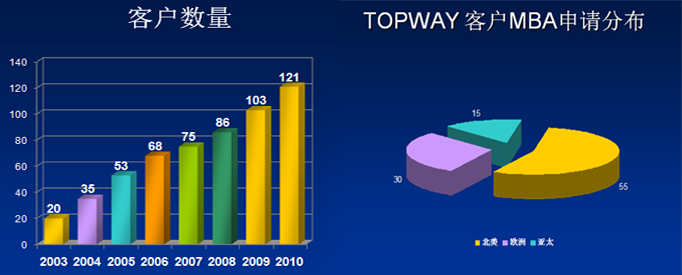Orchid的进化
版本1. ForeverDark 750
第一句话是从在琥珀中发现的蜜蜂化石尾部提炼出来的远古时期的花粉证明了orchid这种植物在恐龙灭绝之前就已存在,整篇文章就是谈这种植物在啥时候进化出来。最后一句话印象也比较深刻,除了一道题,就是讲这个发现很难得,因为(合理推断的,也是我选的这题的答案)适合orchid生长的气候下很难.....(具体很难怎样不敢肯定,还是不要误导大家)
版本二、edmundshi 730
讲一个orchid(一种远古植物)化石发现的价值的
第一段:说人们在一个有蜜蜂的琥珀化石里发现了orchid的花粉。然后作者说这个发现有意义,证明了orchid可能在恐龙之前就出现了。最后的结语说大家对此有争论,这句就是为后面展开的。
第二段:开始讲争论。有人说不能证明,然后给出原因。作者再对此论断评价,为负评价。
第三段:讲正评价,最后说那个化石很难得,因为适合该植物成长的地方温度和湿度都不利于化石的形成。(有题,就是问可以infer什么)
题目:只记得两题了:
(1)Main Idea:选:介绍一个发现,并说明该发现的一些意义。介绍第一段时提到过
(2)Inference 正解应该是:适合该植物成长的地方温度和湿度都不利于化石的形成,出题点在第三段
考古(花花)
版本一:
挺难的 很长 4段 pollen花粉在一个什么化石上面显示出orchids的历史
第一段说原来的人认为这个兰花的历史是某某年以前
第二段 某个研究表现出兰花的历史比想象的长很多。。。
题目1 文章说了什么选discuss a evidence 什么什么的
题目二是说第二段的研究说明了什么 应该是说兰花的历史比written的长 written的内容是指第一段对兰花的研究
版本二:
说兰花orchid,说有一个蜜蜂的化石发现了,化石里有花粉,有人推论很早就有兰花了,和恐龙同一时期,但是其他人提出另外的意见,blabla...。最后一段最后一句是说此化石形成条件、花儿开花条件和当地气候成矛盾关系。
版本三
兰花,蜜蜂化石和恐龙那篇,篇幅短,但不简单。有一道定位到最后一段的indicate的题
背景资料
感谢Ashley_7提供
一只两千万年前受困于多明尼加琥珀中的蜜蜂身上的花粉块pollinia ,改写了兰花的演化史。
This bee, preserved in amber, carries pollen of Meliorchis caribea , the first confirmed fossil orchid known to science. The discovery allowed researchers to calculate when the orchid family originated (Image: Santiago Ramirez) This bee, preserved in amber, carries pollen of Meliorchis caribea , the first confirmed fossil orchid known to science. The discovery allowed researchers to calculate when the orchid family originated (Image: Santiago Ramirez)
哈佛大學生物學家在日前刊登的研究報告中指出,現代蘭花最早的共同祖先,可追溯至八千萬年前恐龍生存的白堊紀末期,讓一世紀以來有關於蘭花起源的辯論為之平息。哈佛大学生物学家在日前刊登的研究报告中指出,现代兰花最早的共同祖先,可追溯至八千万年前恐龙生存的白垩纪末期,让一世纪以来有关于兰花起源的辩论为之平息。
讓恐龍滅絕的因素,可能幫了蘭花一把。让恐龙灭绝的因素,可能帮了兰花一把。 哈佛研究員拉米雷斯領導的研究團隊說,蘭花在恐龍全數滅絕後,開始大量遍布地球。哈佛研究员拉米雷斯领导的研究团队说,兰花在恐龙全数灭绝后,开始大量遍布地球。
拉米雷斯在「自然」期刊中撰文指出,在多明尼加共和國琥珀中所發現的一隻蜜蜂背上,發現蘭花的花粉塊,這隻兩千萬年前的蜜蜂被蘭花吸引後,永遠被困在一塊琥珀內部。拉米雷斯在「自然」期刊中撰文指出,在多明尼加共和国琥珀中所发现的一只蜜蜂背上,发现兰花的花粉块,这只两千万年前的蜜蜂被兰花吸引后,永远被困在一块琥珀内部。
拉米雷斯告訴法新社:「這是首度發現可辨識的蘭花化石,也是觀察化石紀錄中,首度發現昆蟲與蘭花互動。」拉米雷斯告诉法新社:「这是首度发现可辨识的兰花化石,也是观察化石纪录中,首度发现昆虫与兰花互动。」
這個新種蘭花經DNA辨識後,命名為Meliorchis caribbean。这个新种兰花经DNA辨识后,命名为Meliorchis caribbean。 鑑定出這塊化石的年代之後,科學家便可應用現代蘭花族譜,利用DNA變異估算生物體分歧時間點的「分子時鐘」,追溯推斷這些蘭花的始祖究竟是多久以前出現。鉴定出这块化石的年代之后,科学家便可应用现代兰花族谱,利用DNA变异估算生物体分歧时间点的「分子时钟」,追溯推断这些兰花的始祖究竟是多久以前出现。
Fossilised orchid pollen on a bee preserved in amber is the first evidence that these delicate flowers existed around the time of the dinosaurs, US researchers say. Fossilised orchid pollen on a bee preserved in amber is the first evidence that these delicate flowers existed around the time of the dinosaurs, US researchers say.
Biologists at Harvard University say the ancient pollen, found in a clump on a now-extinct worker bee, means orchids are much older than once thought. Biologists at Harvard University say the ancient pollen, found in a clump on a now-extinct worker bee, means orchids are much older than once thought.
They say the orchid family is up to 80 million years old, rather than as young as 26 million years old, as some people estimate. They say the orchid family is up to 80 million years old, rather than as young as 26 million years old, as some people estimate.
Orchids are the largest and most diverse plant family on earth. But they have been absent from the fossil record, says researcher Santiago Ramirez, whose study appears today in the journal Nature . Orchids are the largest and most diverse plant family on earth. But they have been absent from the fossil record, says researcher Santiago Ramirez, whose study appears today in the journal Nature .
This is because they bloom infrequently and they tend to live in tropical places where humidity and heat prevent them fossilising. This is because they bloom infrequently and they tend to live in tropical places where humidity and heat prevent them fossilising.
But Ramirez and colleagues had better luck with their sample of orchid pollen, as it was preserved in amber along with the insect that carried it. But Ramirez and colleagues had better luck with their sample of orchid pollen, as it was preserved in amber along with the insect that carried it.
The amber-encased bee carrying the ancient pollen was first discovered in the Dominican Republic by a private collector in 2000. The amber-encased bee carrying the ancient pollen was first discovered in the Dominican Republic by a private collector in 2000.
It made its way to Harvard's Museum of Comparative Zoology in 2005. It made its way to Harvard's Museum of Comparative Zoology in 2005.
The bee dates to 15-20 million years old, the researchers say, and carries structures called pollinia, which orchids use to package their pollen. The bee dates to 15-20 million years old, the researchers say, and carries structures called pollinia, which orchids use to package their pollen.
The researchers then analysed the pollen's DNA and, using the molecular-clock method of DNA analysis, estimated the age of the orchid family. The researchers then analysed the pollen's DNA and, using the molecular-clock method of DNA analysis, estimated the age of the orchid family.
They put that date to about 80 million years ago, the age of the most recent common ancestor to all modern orchids. They put that date to about 80 million years ago, the age of the most recent common ancestor to all modern orchids.
It would have lived in the twilight of the dinosaurs, in the Late Cretaceous period. It would have lived in the twilight of the dinosaurs, in the Late Cretaceous period.
The dinosaurs' extinction is thought to have occurred about 65 million years ago, after which the flowers spread dramatically across the globe. The dinosaurs' extinction is thought to have occurred about 65 million years ago, after which the flowers spread dramatically across the globe.
The Orchidaceae family is now the largest in the plant kingdom, numbering at least 25,000 species. The Orchidaceae family is now the largest in the plant kingdom, numbering at least 25,000 species.
Ramirez says the find not only helps resolve a debate over the age of the orchid but it provides the first direct evidence of ancient pollination. Ramirez says the find not only helps resolve a debate over the age of the orchid but it provides the first direct evidence of ancient pollination.
"This is one of the first fossil observations in which you can find both the pollinator and the plant together," he says. "This is one of the first fossil observations in which you can find both the pollinator and the plant together," he says. | 


